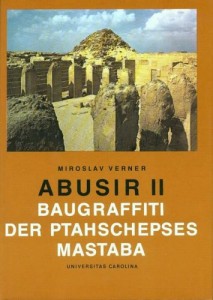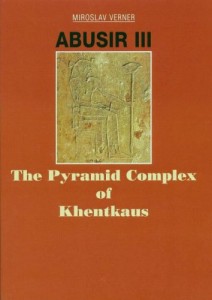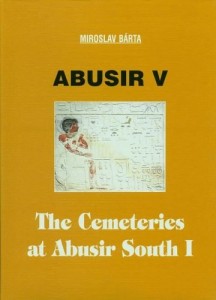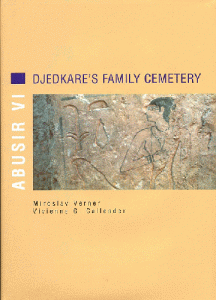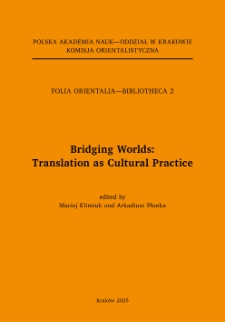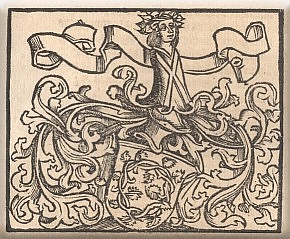This page includes links to digitized or born-digital open access monograph series. It includes 170 titles at the moment (27 June 2017).
I'll be grateful for reminders and information on Series not yet listed.
I'll be grateful for reminders and information on Series not yet listed.
- Abusir
- Achaemenid History
- Acta Classica Supplementary Volumes
- Acta Iranica
- Ägyptologische Forschungen
- AIGIS Supplementum
- Amarna Reports
- Analecta Orientalia (fifteen early volumes)
- ANCIENT NEAR EAST MONOGRAPHS / MONOGRAFIAS SOBRE EL ANTIGUO CERCANO ORIENTE
- AIO Papers (Attic Inscriptions Online)
- Altbabylonische Briefe in Umschrift und Übersetzung
- Amheida [NYU Excavations at Amheida in Egypt's Dakhleh Oasis]
- Ancient Narrative Supplementum
- Anexos de la Revista de Egiptología. Colección Estudios
- Antichistica
- Archäologische Berichte
- Archaologische Berichte aus dem Yemen
- Archaeological Survey of Nubia
- The Archaeology of Fazzan
- Archéo.doct
- Archives Royales de Mari
- Athenian Agora
- Archäologischen Berichte
- Archives of Archaeology
- Ausgrabungen der Deutschen Orient-Gesellschaft in Babylon
- Ausgrabungen in Sendschirli
- Ausgrabungen in Uruk-Warka: Endberichte
- Babylonische Archive
- Beschreibung der aegyptischen Sammlung des niederländischen Reichsmuseums der Altertümer in Leiden
- Beycesultan
- Bibliothèque archéologique et historique
- Bibliothèques de l'Ecole française d'Athènes et de Rome - Série Athènes
- Birmingham Egyptology Journal Occasional Publications
- Black Sea Studies
- Bogazkoy
- British Institute at Ankara Electronic Monographs
- The British Museum Online research catalogues
- The British Museum Research Publications series
- Byzantina Sorbonensia
- Byzanz zwischen Orient und Okzident
- Cahiers de la Villa Kérylos
- California Classical Studies
- Catalogue général des antiquités égyptiennes du Musée du Caire
- CENiM – Les Cahiers «Égypte Nilotique et Méditérranéenne»
- Chicago Hittite Dictionary Supplements (CHDS)
- Collana della Rivista di Diritto Romano
- Collection de la Maison de l'Orient, Série archéologique
- Collection de la Maison de l'Orient méditerranéen ancien. Série littéraire et philosophique
- Corinth
- Corpus Agrimensorum Romanorum
- Corpus der minoischen und mykenischen Siegel
- Corpus Vasorum Antiquorum
- Cuneiform monographs
- Cuneiform Texts from Babylonian Tablets in the British Museum (CT)
- Cuneiform Texts from Nimrud
- Daidalos: Heidelberger Abschlussarbeiten zur Klassischen Archäologie
- Death on the Nile Online Publications
- Demircihüyük Excavation Reports
- Dialogues d'histoire ancienne. Suppléments
- Documenta et monumenta Orientis antiqui
- Les dossiers de l'IFEA: série: patrimoines au présent
- École Française d'Athènes, Travaux et mémoires
- Egyptologische Uitgaven
- Estudos de Egiptologia
- Études chypriotes
- Études crétoises
- Études péloponnésiennes
- Excavations at Tell Brak
- Excavations at Tepe Yahya, Iran
- Exploration Archéologique de Délos
- Fieldiana Anthropology
- Fontes historiae Nubiorum : textual sources for the history of the Middle Nile Region between the eighth century BC and the sixth century AD / 3 From the first to the sixth century AD.
- Fouilles de Delphes
- Fouilles de l'Institut français d'archéologie orientale du Caire (FIFAO)
- Gaziantep Regional Project Occasional Publications (GRPOP)
- The Giza Mastabas Series
- Gordion Excavation Reports
- Graeca Tergestina
- Graeca Tergestina. Praelectiones Philologiae Tergestinae
- Graeca Tergestina. Studi e testi di filologia greca
- Les Graffiti de la Montagne Thébaine
- Greek, Roman, and Byzantine Monographs
- Halabiyya-Zenobia
- Harvard African Studies
- Hellenic Studies Series
- Hesperia Supplements
- Hethitologie Portal Mainz - Materialien
- Hieroglyphic texts from Egyptian stelae, &c., in the British Museum
- Histos Supplements
- IBAES: Internet-Beiträge zur Ägyptologie und Sudanarchäologie
- ICCROM Conservation Series Online
- Instrumenta
- International Voices in Biblical Studies
- Internet Archaeology E-Monograph Series
- Interpretatio: Sources and Studies in the History of Science, Series B
- Isin - Isan Bahriyat
- Ivories from Nimrud
- Journal of Conservation and Museum Studies Special Collections
- Kamid el-Loz
- Keilschrifttexte aus Assur literarischen Inhalts
- Kernos suppléments
- Kleine Berliner Schriften zum Alten Ägypten
- Larsa Reports
- Late Antique and Medieval Islamic Near East (LAMINE)
- The Leipzig Open Fragmentary Texts Series (LOFTS)
- Library of oriental texts
- Lingua Aegyptia. Studia Monographica
- Loebolus
- Materialien zum Sumerischen Lexikon Online (early volumes)
- Materiale Textkulturen [Material Text Cultures]
- Materials for the Assyrian Dictionary (MAD)
- Matériaux pour l’étude de la toponymie et de la topographie (MTT)
- Mémoires publiés par les membres de la Mission archéologique française au Caire
- Mission Archéologique de Mari
- Medinet Habu Final Reports / Excavations at Medinet Habu / Medinet Habu Preliminary Reports / Medinet Habu Studies
- Mission archéologique en Iran (cited variously as Délégation en Perse; Mission archéologique de Susiane; Mission archéologique de Perse, Mémoires de la Délégation Archéologique en Iran, and commonly known as MDP).
- Mondes méditerranéens antiques
- Les Monuments ayyoubides de Damas
- MOSAIKmonografien
- Münchener Beiträge zur Papyrusforschung und antiken Rechtsgeschichte
- Münchner Vorlesungen zu Antiken Welten
- Occasional Papers in Coroplastic Studies
- Orbis Biblicus et Orientalis
- Orbis Biblicus et Orientalis. Series Archaeologica Online
- Oriental Institute Assyriological Studies (AS)
- Oriental Institute Communications (OIC)
- Oriental Institute Miscellaneous Publications
- Oriental Institute Museum Publications (OIMP)
- Oriental Institute Nubian Expedition (OINE)
- Oriental Institute's on-line Photographic Archives
- Oriental Institute Publications (OIP)
- Oriental Institute Researches In Anatolia
- Oriental Institute Seminars (OIS)
- OrientLab
- OrientLab Series Maior
- Oxyrhynchus Papyri Volumes 1-15
- PIHANS : uitgaven van het Nederlands Instituut voor het Nabije Oosten te Leiden
- Polymnia
- Probleme der Ägyptologie
- Publications de la Glyptothèque Ny Carlsberg København
- Publications of the Henri Frankfort Foundation
- Publications of the Joint Expedition of the British Museum and of the University Museum,University of Pennsylvania, Philadelphia to Mesopotamia: Ur Excavations
- Quaderni di Erga-Logoi
- Quaderni IMTO
- Roma Subterranea Judaica (series)
- ROSAPAT - Rome "La Sapienza" Studies on the Archaeology of Palestine & Transjordan
- The Royal Cemeteries of Kush
- Salamine de Chypre
- Sardis: publications of the American Society for the excavation of Sardis
- Schriften des Historischen Kollegs. Kolloquien
- Schweich Lectures on Biblical Archaeology
- Seleucia on the Tigris
- Specimina electronica antiquitatis.Pécsi Tudományegyetem Ókortörténeti Tanszékének online könyvsorozata = the online book series of the Department of Ancient History, the University of PécsLibri
- Studia post-Biblica
- Studien zu den Boğazköy-Texten
- Studies in African Archaeology
- Studies in Ancient Oriental Civilization (SAOC)
- Studies in the history and culture of the ancient Near East
- Suppléments au Bulletin de Correspondance Hellénique
- Supplements to Annali: Rivista del Dipartimento di Studi Asiatici e del Dipartimento di Studi su Africa e Paesi Arabi
- Les Temples immergés de la Nubie
- Teiresias Supplements Online
- Topoi: Berlin Studies of the Ancient World / Berliner Studien der Alten Welt
- Travaux de la Maison de l'Orient
- Trismegistos Online Publications (TOP)
- Trismegistos Online Publications Special Series (TOP SS)
- Ugaritica
- Uppsala Studies in Egyptology
- West & East. Rivista della Scuola di Specializzazione in Beni Archeologici. Monografie
- Würzburger Jahrbücher für die Altertumswissenschaft: Beiheft
- Zetemata
See AWOL's full List of Open Access Journals in Ancient Studies









